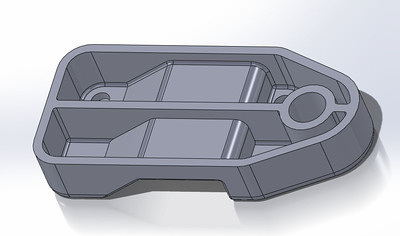- Joined
- Dec 2, 2005
- Messages
- 9,014
- Likes
- 5,488
Unfortunately after just a couple of cycles, the feed lips are breaking off this mag design :-(
I think if I could print the magazine along another axis it might work better, the problem is that the stress is "with the grain" as it were, the feed lips tend to get bent outwards and the adhesion from one layer to the next is kind of the weak point
of this printer; if I fooled around more with extrusion temperature, speed, and a cooling fan mounted to the extruder head, I could probably get a stronger hold between layers , but I don't have that much time to experiment.
It took me quite a few tries to get the dimensions correct, and there is not much room for error, the cartridges have to fit into the magazine, and the magazine has to fit into the mag well, and the wall thickness is pretty slim, just a few hundredths of an inch in some places. So there's really no room to beef up the wall thickness anyplace.
I think if I could print the magazine along another axis it might work better, the problem is that the stress is "with the grain" as it were, the feed lips tend to get bent outwards and the adhesion from one layer to the next is kind of the weak point
of this printer; if I fooled around more with extrusion temperature, speed, and a cooling fan mounted to the extruder head, I could probably get a stronger hold between layers , but I don't have that much time to experiment.
It took me quite a few tries to get the dimensions correct, and there is not much room for error, the cartridges have to fit into the magazine, and the magazine has to fit into the mag well, and the wall thickness is pretty slim, just a few hundredths of an inch in some places. So there's really no room to beef up the wall thickness anyplace.


![Grin [grin] [grin]](/xen/styles/default/xenforo/smilies.vb/041.gif)
